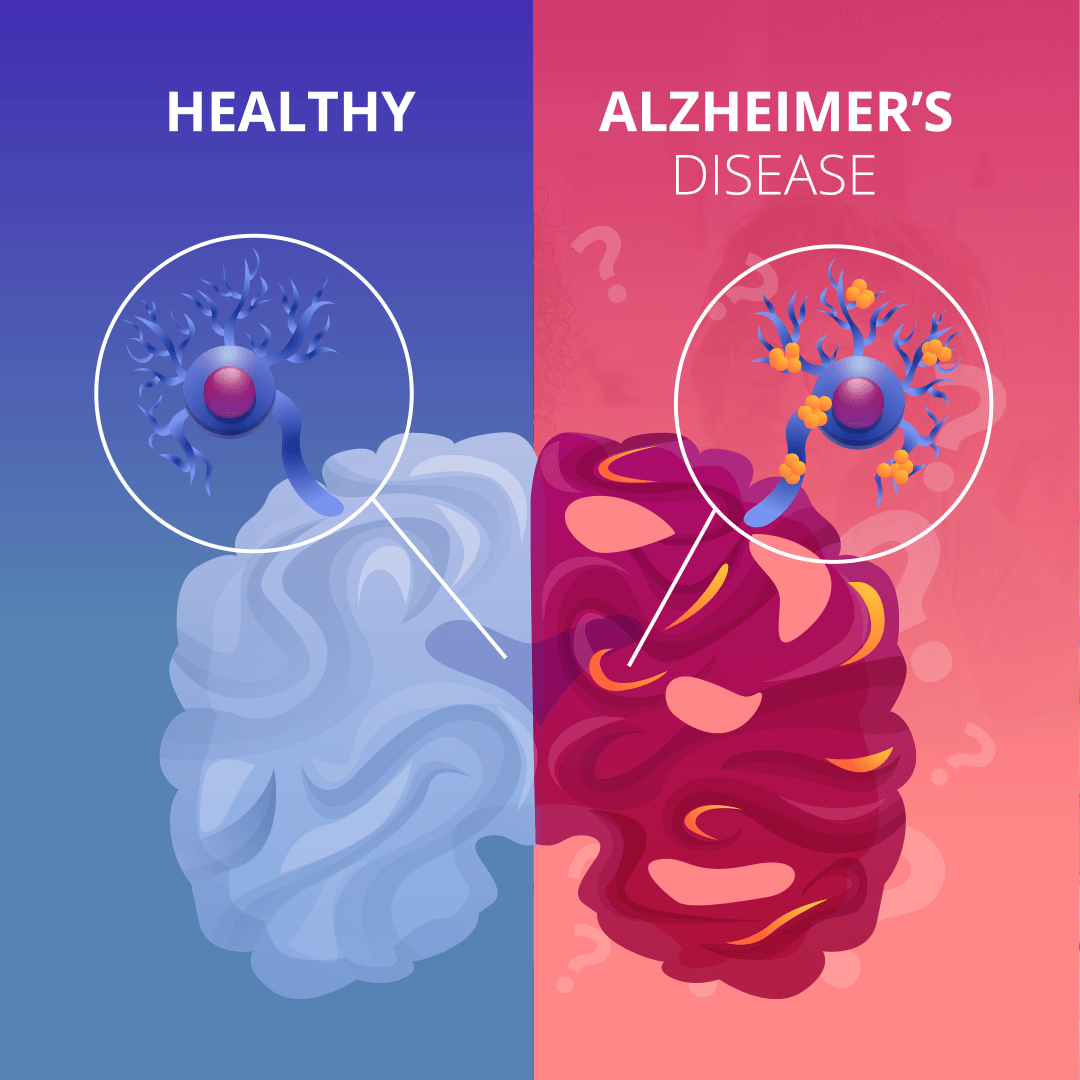A deeper understanding of Alzheimer's disease
Abstract -Alzheimer’s disease is a neurological disorder that affects millions of people worldwide. The disease, named after German psychiatrist Alois Alzheimer who first described it in 1906, is characterized by the loss of cognitive abilities, including memory, thinking, and language, as well as behavioral changes.
Introduction
The exact cause of Alzheimer's disease Is not yet fully understood, but researchers believe it is the result of several factors, including age, genetics, lifestyle, and environmental factors. The most significant risk factors for Alzheimer’s disease are age and genetics. People over the age of 65 are at the highest risk, and those with a family history of the disease are also more likely to develop it.
Alzheimer's disease is caused by the accumulation of two proteins in the brain: beta-amyloid and tau. Beta-amyloid is a protein fragment that clumps together to form plaques outside of nerve cells in the brain. Tau is a protein that forms tangles inside the nerve cells. These abnormal protein accumulations lead to the death of nerve cells and the progressive loss of brain tissue, which ultimately results in the cognitive and memory impairment associated with Alzheimer's disease.
Symptoms includes -
The symptoms of Alzheimer’s complaint generally develop sluggishly and worsen over time.. They include forgetfulness, confusion, difficulty solving problems, trouble with language, disorientation, mood swings, and loss of motivation. As the disease progresses, basic daily activities such as bathing, eating, and dressing become challenging.
Material used- Google scholar, wikipidia,pubmed
Keywords – Alzheimer’s dementia, neurological disorder ,genetics, plaques.tangles, cognitive function.
In this article, we will explore each of these mechanisms in more detail.
Beta-amyloid plaques and neurofibrillary tangles: The accumulation of beta-amyloid plaques and neurofibrillary tangles is considered to be the hallmark of Alzheimer's disease. Beta-amyloid is a peptide that is produced by the cleavage of amyloid precursor protein (APP). In Alzheimer's disease, beta-amyloid accumulates in the extracellular space, forming plaques. Neurofibrillary tangles, on the other hand, are formed when the protein tau becomes hyperphosphorylated, causing it to aggregate into twisted filaments within the neurons. These plaques and tangles disrupt the normal functioning of the brain, leading to neuronal death and cognitive decline.
Oxidative stress: Oxidative stress is a condition that occurs when there is an imbalance between the production of reactive oxygen species (ROS) and the body's antioxidant defenses. In Alzheimer's disease, there is evidence of increased oxidative stress in the brain. This can damage cell membranes, proteins, and DNA, leading to neuronal dysfunction and death.
Inflammation: Inflammation means the normal response of the immune system to injury or infection. However, chronic inflammation can be damaging to the brain, leading to neuronal death and cognitive impairment. In Alzheimer's disease, there is evidence of increased inflammation in the brain, which can contribute to the formation of beta-amyloid plaques and neurofibrillary tangles.
Synaptic dysfunction: Synapses are the connections between neurons that allow them to communicate with each other. In Alzheimer's disease, there is evidence of synaptic dysfunction, which can impair communication between neurons and lead to cognitive impairment. This can occur as a result of beta-amyloid plaques and neurofibrillary tangles, as well as oxidative stress and inflammation.
How to manage ?
Currently, there is no cure for Alzheimer’s disease. However, there are treatments that can help manage symptoms and improve quality of life for patients. Medications such as cholinesterase inhibitors and memantine can improve cognitive function and help slow down the disease’s progression. In addition, behavioral interventions such as cognitive-behavior therapy and environmental modifications can help with mood and behavior changes.
Research is ongoing to develop new treatments and a better understanding of the disease’s underlying causes. Scientists are studying the role of genetics, inflammation, and other factors that may contribute to Alzheimer’s disease. They are also exploring new approaches such as immunotherapy and drug therapies that target specific proteins involved in the disease.
Research into the underlying mechanisms of Alzheimer's disease is ongoing. Some promising areas of research include:
Early Detection: Researchers are exploring new ways to detect Alzheimer's disease earlier, before symptoms become apparent. This includes the use of biomarkers such as beta-amyloid and tau in cerebrospinal fluid and blood tests.
Genetics: Studies have identified several genes associated with an increased risk of developing Alzheimer's disease, including the APOE gene. Researchers are investigating how these genes contribute to the disease and how they can be targeted for treatment.
Immunotherapy: Researchers are exploring the use of immunotherapy, which involves using antibodies to target and remove beta-amyloid from the brain. Early clinical trials of immunotherapy have shown promise, but more research is needed to determine its safety and effectiveness.
Lifestyle Interventions: Studies have shown that lifestyle interventions such as exercise, diet, and cognitive stimulation can help reduce the risk of developing Alzheimer's disease and slow its progression in those who have already been diagnosed.
In conclusion, Alzheimer’s disease is a complex and devastating illness that affects millions of people worldwide. While there is no cure, there are treatments available that can help manage symptoms and improve quality of life for patients. Continued research is necessary to understand the causes of the disease fully and develop effective new treatments.
Reference :
Alzheimer's Association. (2022). 2022 Alzheimer's disease facts and figures. Alzheimer's & Dementia, 18(3), 371-434.
Holtzman, D. M., Morris, J. C., & Goate, A. M. (2011). Alzheimer's disease: the challenge of the second century. Science translational medicine, 3(77), 77sr1-77sr1.
Hardy, J., & Selkoe, D. J. (2002). The amyloid hypothesis of Alzheimer's disease: progress and problems on the road to therapeutics. Science, 297(5580), 353-356.
Alzheimer's Association. (2022). Alzheimer's disease and dementia research milestones. Retrieved from
Barnes, D. E., & Yaffe, K. (2011). The projected effect of risk factor reduction on Alzheimer's disease prevalence. The Lancet Neurology, 10(9), 819-828.

Articles from Mohammad Bilal Khan
View blog
ABSTRACT: Medical school is a rigorous and challenging journey, filled with long hours of studying, ...

Abstract: · Chronic diseases such as diabetes, cancer, and cardiovascular disease are major contribu ...

ABSTRACT: · Physical exercise has been shown to have a powerful impact on mental health, and researc ...
Related professionals
You may be interested in these jobs
-
Laboratory Technician Rani Durgawati Govt CollegePasarwada
Found in: Talent IN C2 - 3 days ago
Centre Entrepreneurship Development Madhya PradeshIndia Bhopal, IndiaName ofDepartment: Rani Durgawati Govt CollegePasarwada · JobTitle: LaboratoryTechnician. · Qualification:Graduation in Science Subject · Abilityto assistwork. · Experience:One year experience in office work any Govt/Non Govt./ Central GovtOffice. · Roleand responsibility: Manage ...
-
Compensation & Benefits Associate
Found in: Talent IN C2 - 1 day ago
Saaki Argus & Averil Consulting Mumbai, IndiaAbout Client: · A leading Engineering Technology Organization · Job Responsibilities: · Responsible for India Compensation & Benefits · Compensation Benchmarking · Perform Annual/ Bi- Annual Merit Increement · Involve in Compensation Parity Analysis · Take care of Increements , R ...
-
Area Sales Manager
Found in: Appcast Linkedin IN C2 - 4 days ago
Casantro Mumbai, IndiaCasantro is a luxury kitchens and wardrobes brand, co-created with a community of over 1000+ design professionals. Headquartered in Bangalore, we are rapidly expanding our retail presence all across India. We service architects and interior designers exclusively. We take pride in ...



Comments